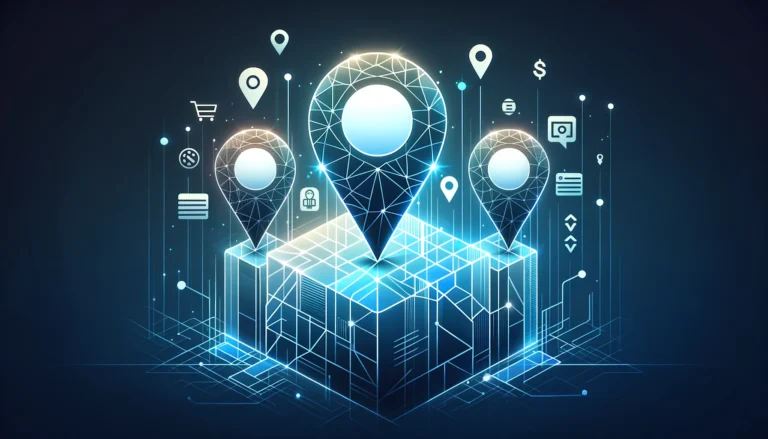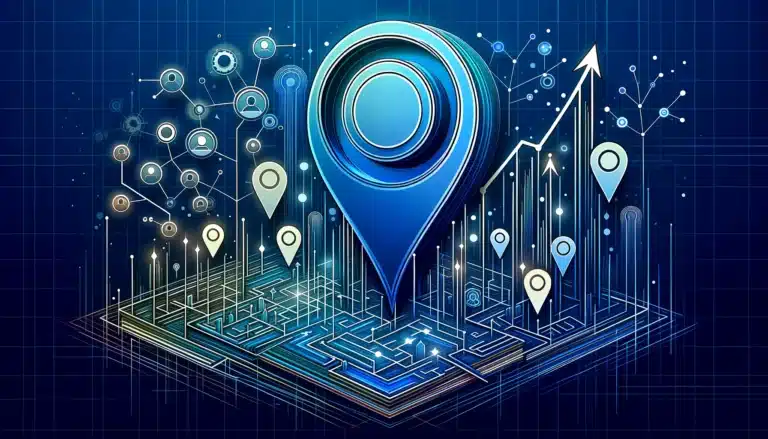Google Maps Listing Cost: Pricing & Features Compared
I’ve spent years helping small businesses navigate the complex world of local SEO, and I’ve noticed something interesting – there’s a lot of confusion about the pricing structure of Google Maps listings. Some business owners fear they’ll need to shell out hundreds of dollars monthly, while others assume everything is completely free. The truth, as you might expect, lies somewhere in between.
What makes this topic particularly interesting is how Google has evolved its offerings over time. Back when I first started working with local businesses, Google Places was the standard. Then came Google+ Local, followed by Google My Business, and now we’re looking at Google Business Profile. Throughout these transitions, the cost structure has shifted in ways that aren’t always obvious at first glance.
- Basic Google Maps/Business Profile listings are completely free
- Core features like business information, photos, posts, and Q&A management come at no cost
- Premium features through Google Maps Platform API have usage-based pricing
- Most small businesses can operate effectively using only the free features
- Hidden costs may include professional photography, listing management tools, and agency fees
- The true “cost” often comes in time investment for proper optimization and management
How Google Maps Listings Work
Let’s start with the basics – understanding exactly what a Google Maps listing is and how it functions in today’s digital landscape.
Google Maps has evolved from a simple navigation tool to a powerful business discovery platform. When users search for products or services “near me” or in a specific location, Google Maps displays relevant businesses in that area. Your Google Maps listing (now primarily managed through Google Business Profile) serves as your business’s digital storefront in these local search results.
At its core, a Google Maps listing connects your physical business location with Google’s massive search ecosystem. According to Google Maps Listings Explained, these listings appear across Google Search, Maps, and Shopping, making them incredibly valuable for local business visibility.
Think of your Google Maps listing as the digital equivalent of a storefront sign – it helps potential customers find you, learn about your offerings, and decide whether to visit or contact you. But unlike a physical sign, your Google Maps listing can be updated in real-time, respond to customer inquiries, showcase your products or services through photos, and even influence how findable you are through proper optimization.
The importance of accurate, up-to-date information cannot be overstated. Google uses the information in your listing not just to display your business but also to determine whether your business is relevant to specific searches. For instance, if someone searches for “pet-friendly hotels downtown,” Google looks at your business category, description, reviews, and other signals to determine if your listing should appear.
How to Create and Verify a Google Maps Listing
Creating a Google Maps listing for your business is straightforward, but the verification process can sometimes be tricky. Here’s a simplified guide to getting your business on Google Maps:
1. Visit the Google Business Profile website or search for your business name on Google
2. Click on “Add your business to Google” if it doesn’t already exist
3. Enter your business details, including name, category, location, and contact information
4. Select a verification option (most commonly by mail, but sometimes phone, email, or instant verification is available)
5. Complete the verification process (which may take up to two weeks if done by mail)
I once helped a local bakery set up their Google Maps listing, and we encountered an interesting hiccup. The verification postcard never arrived after two attempts. Rather than give up, we reached out to Google Business Profile support, who offered an alternative verification method over video call where the business owner had to show their storefront signage and business license. It wasn’t the standard process, but it worked! This experience taught me that persistence pays off when setting up these crucial business listings.
Common verification issues include:
– Address mismatches between what you enter and what Google has on record
– Businesses operating from shared workspaces or virtual offices
– Recently moved businesses with outdated information elsewhere online
– Businesses in new buildings or developments not yet recognized by Google
If you encounter verification problems, don’t panic. Document everything carefully, be prepared to provide additional proof of your business legitimacy, and remember that Google’s support team can often provide alternative verification methods.
Pricing Structure for Google Maps Listings
Now for the million-dollar question: how much does a Google Maps listing cost? The answer might surprise you.
The basic Google Maps listing through Google Business Profile is completely free. Yes, you read that right – it costs absolutely nothing to create and maintain a standard business listing on Google Maps. This includes:
– Your business name, address, and phone number
– Business hours and special hours for holidays
– Business description and categories
– Photos and videos of your business
– The ability to post updates and offers
– Responding to reviews and questions
– Basic insights about how customers find and interact with your listing
For most small to medium-sized businesses, these free features provide everything needed to establish a strong presence on Google Maps. However, there are premium features available through the Google Maps Platform (primarily for developers and larger enterprises) that do come with costs.
According to Google Maps Pricing Details, the Google Maps Platform uses a pay-as-you-go pricing model based on API calls and usage. This becomes relevant if you’re building custom applications that integrate Google Maps functionality or need advanced features like:
– Maps embedding on high-traffic websites
– Route optimization for delivery businesses
– Store locator tools for multi-location businesses
– Advanced location-based services
The Google Maps Platform pricing is usage-based with $200 monthly free credit (equivalent to approximately 28,000 map loads). Beyond that, costs range from $2-$30 per 1,000 additional requests depending on the specific API used.
When comparing Google Maps to other platforms like Yelp or TripAdvisor, Google’s free business listing offering is substantially more generous. Yelp, for instance, offers basic free listings but charges for enhanced features and ad placement, with packages starting around $300 per month. Similarly, Apple Maps business listings are free, but they don’t offer the same level of features or reach as Google Maps.
Hidden Costs and Budgeting Tips
While the basic Google Maps listing is free, savvy business owners should be aware of potential hidden costs:
1. Professional photography – While you can upload your own photos, professional photography typically costs $300-$1,000 but can significantly improve your listing’s appeal.
2. Listing management software – Tools like successful directory website business solutions can help manage your listing along with other online directories, costing $20-$100+ monthly.
3. Agency management – Hiring professionals to optimize and manage your Google Business Profile can cost $200-$2,000 monthly depending on service level.
4. Time investment – Perhaps the biggest “hidden cost” is the time required to properly maintain your listing, respond to reviews, post updates, and analyze performance.
To budget effectively for your Google Maps presence:
– Start with the free basic listing and master its features before considering paid enhancements
– Invest in professional photography as a one-time expense with long-term benefits
– Consider directory for business environment solutions only if managing multiple locations or platforms
– Allocate weekly time for listing maintenance rather than letting it become overwhelming
One small retail client of mine initially balked at spending $500 on professional photography for their Google listing. After much convincing, they made the investment, and within three months, their in-store traffic increased by 32%. The photos showcased their unique store layout and product displays in a way that smartphone photos simply couldn’t capture, proving that sometimes the best investments aren’t in paid features but in making the free features look their best.
Key Features of Google Maps Listings
Understanding the full range of features available through your Google Maps listing can help you maximize its value without unnecessary spending. Let’s explore the core and advanced features available:
Core Features (Free):
– Business Information: Name, address, phone number, website, hours, and business description
– Visual Content: Photos and videos of your business, products, and services
– Customer Interaction: Review management, Q&A section, messaging capabilities
– Posts: Share updates, offers, events, and announcements directly on your listing
– Attributes: Highlight specific features of your business (wheelchair accessibility, outdoor seating, etc.)
– Products and Services: Showcase what you offer with descriptions and pricing
– Basic Analytics: See how customers find your listing and what actions they take
These core features alone provide tremendous value for local businesses. The ability to showcase your business visually, interact with customers, and provide up-to-date information helps convert search users into actual customers.
When compared to competitors like Yelp or Facebook Business Pages, Google Maps offers comparable core features. However, Google’s integration with search and maps gives it a significant advantage in terms of reach and visibility. While Yelp may have more detailed review systems and Facebook offers better social integration, Google Maps typically drives more direct customer actions due to its dominant position in search.
Advanced Features for Local SEO
Beyond the basics, Google Maps offers several advanced features that can significantly enhance your local SEO performance:
Google Business Profile Posts function like mini-blog posts that appear directly in your listing. These posts can include:
– Special offers and promotions
– Event announcements
– Product highlights
– General business updates
Posts remain visible for seven days (except events, which stay until the event date), making them perfect for time-sensitive information. Using posts regularly signals to Google that your business is active and engaged, potentially improving your ranking in local search results.
Customer reviews and ratings are perhaps the most powerful feature for local SEO. Businesses with more positive reviews tend to rank higher in local search results. The key is not just collecting reviews but actively responding to them – both positive and negative. Google looks favorably on businesses that engage with customer feedback.
For optimal review management:
– Respond to all reviews within 24-48 hours
– Thank positive reviewers and address concerns raised in negative reviews
– Avoid cookie-cutter responses; personalize each reply
– Use keywords naturally in your responses to boost SEO
The Q&A section of your Google Maps listing is often overlooked but extremely valuable. This feature allows anyone to ask questions about your business, which can then be answered by you or other users. By proactively adding and answering common questions about your business, you:
– Control the narrative about your business
– Provide valuable information to potential customers
– Include additional keywords that may help your listing appear in more searches
– Demonstrate responsiveness and customer service
One restaurant I worked with used the Q&A section brilliantly by adding 15 common questions about their menu, dietary accommodations, reservations, and parking options. This not only reduced phone calls asking these same questions but also improved their visibility for searches like “gluten-free restaurants near me” and “restaurants with easy parking downtown.”
How to Optimize Your Google Maps Listing
Creating a Google Maps listing is just the first step – optimizing it is where the magic happens. Even though the basic listing is free, the return on investment from proper optimization can be substantial.
Best practices for optimization include:
1. Complete EVERY section of your profile – Google rewards completeness. Leave no field empty if possible, as each piece of information helps Google understand your business better.
2. Use consistent NAP (Name, Address, Phone) information across all online platforms. Consistency signals legitimacy to Google and improves your chances of ranking well.
3. Choose the most specific primary category and add all relevant secondary categories. Being “Italian Restaurant” is better than just “Restaurant” if that’s what you offer.
4. Write a keyword-rich but natural business description that accurately represents your business while incorporating relevant search terms.
5. Add high-quality photos regularly. Businesses with recent, diverse photos receive substantially more clicks, calls, and direction requests.
Keywords and categories play a crucial role in how findable your business is on Google Maps. Your primary category has the strongest influence on which searches your business appears for, while additional categories help you appear for a broader range of relevant searches.
When selecting categories, be as specific as possible without misrepresenting your business. For example, if you run a pizza restaurant with delivery, selecting “Pizza Restaurant” as your primary category and adding “Pizza Delivery” as a secondary category will be more effective than simply choosing “Restaurant.”
Images and videos dramatically impact customer engagement with your listing. Google’s own data shows that listings with photos receive 42% more requests for directions and 35% more clicks to websites than listings without photos. For maximum impact:
– Upload at least 10 high-quality images covering exterior, interior, products/services, and team members
– Add new photos monthly to keep your listing fresh
– Include videos showcasing your location, products in use, or customer testimonials
– Add virtual tours if possible (these can significantly increase engagement)
Common Mistakes to Avoid
Even free tools can be misused, and Google Maps listings are no exception. Here are some common pitfalls to avoid:
Duplicate listings create confusion for both Google and customers. If you discover multiple listings for your business:
1. Determine which listing has the most reviews and information
2. Claim all versions of your listing if possible
3. Use Google’s “Suggest an edit” feature to mark duplicates
4. Contact Google support if needed to merge or remove duplicates
NAP inconsistency across the web is one of the biggest factors hurting local SEO performance. Ensure your business name, address, and phone number are identical everywhere they appear online. This includes:
– Your website
– Social media profiles
– Other business-directory-software-solutions
– Review sites
– Chamber of commerce listings
When I worked with a law firm that had recently moved offices, we discovered their address was inconsistent across 37 different online directories and listings. After systematically updating each one to match their Google Maps listing exactly, their local search visibility improved by 64% within two months. This process cost nothing but time and attention to detail.
Review management missteps can seriously damage your business reputation. Avoid:
– Ignoring negative reviews (this makes you look unresponsive)
– Responding defensively or aggressively to criticism
– Soliciting fake reviews (Google’s algorithms are increasingly good at detecting these)
– Offering incentives for reviews (against Google’s policies)
Instead, develop a systematic approach to encourage legitimate reviews from satisfied customers, and address negative feedback professionally and constructively.
Benefits of Google Maps Listings for Businesses
Understanding the full spectrum of benefits can help you appreciate why optimizing your free Google Maps listing is worth the effort.
Increased visibility and reach is perhaps the most obvious benefit. With billions of searches conducted on Google every day, and nearly half of those having local intent, appearing prominently in Google Maps results puts your business in front of potential customers actively looking for what you offer.
The statistics are compelling:
– 46% of all Google searches have local intent
– 88% of consumer local business searches on a mobile device call or visit the business within 24 hours
– 78% of local-mobile searches result in offline purchases
This translates to real-world foot traffic and phone calls. One cafe owner I worked with was skeptical about the importance of their Google listing until we set up proper tracking. They were shocked to discover that over 70% of their new customers had found them through Google Maps searches for “coffee near me” or “breakfast spot downtown.”
Improved customer engagement comes through the interactive features of Google Maps listings. Customers can:
– Call you with one tap from your listing
– Get directions instantly
– Visit your website
– Ask questions
– Leave and read reviews
– See your latest posts and offers
– Message you directly
These engagement opportunities create multiple paths for converting searchers into customers. The ability to showcase special offers and events through posts also helps drive timely action from potential customers.
Enhanced local SEO performance extends beyond just Google Maps. A well-optimized Google Business Profile improves your visibility in standard Google searches as well, often appearing in the coveted “Local Pack” of three highlighted businesses at the top of search results. This integration between Maps and Search is a unique advantage that other platforms can’t match.
Additionally, your Google Maps listing feeds information to other Google services like Google Assistant, making your business discoverable through voice searches – an increasingly important channel as smart speakers and voice search continue to grow in popularity.
Real-World Success Stories
The power of Google Maps listings is best illustrated through real-world examples:
A small family-owned hardware store I consulted with was struggling to compete with major chains. By fully optimizing their Google Maps listing – adding detailed product categories, posting weekly specials, responding promptly to all reviews, and adding 50+ photos of their unique product selection – they saw a 126% increase in direction requests and a 43% increase in store visits over six months. All from free features.
Another client, a dental practice, used Google Maps posts to promote a new patient special. By creating a visually appealing post with a clear call-to-action and updating it every seven days (when posts expire), they generated 27 new patient appointments in one month – representing over $40,000 in lifetime patient value. Again, using completely free features.
Perhaps my favorite success story involves a food truck that used Google Maps in an innovative way. Rather than just listing their commissary address, they would update their business description weekly with their scheduled locations. They also created posts for each location change and responded to customer questions about their schedule. This strategy transformed their Google Maps listing from a static directory entry into a dynamic tool that helped customers find them as they moved around the city. Their approach was so successful that they added a second food truck within a year.
FAQs
How much does it cost to list a business on Google Maps?
Creating and maintaining a basic business listing on Google Maps is completely free. Google offers this as a free service through Google Business Profile (formerly Google My Business). The basic listing includes your business information, photos, posts, review management, and insights. Premium features through Google Maps Platform API do have costs based on usage, but most small businesses never need these advanced features.
What are the key features of Google Maps listings?
Google Maps listings include business information (name, address, phone, website, hours), photos and videos, customer reviews and responses, Q&A section, business description, attributes (like wheelchair accessibility), the ability to create posts about offers and events, product and service listings, messaging capabilities, and basic analytics about how customers interact with your listing.
How do I optimize my Google Maps listing?
To optimize your Google Maps listing, ensure all information is complete and accurate, choose the most specific business categories, maintain consistent NAP (Name, Address, Phone) across the web, add high-quality photos regularly, respond promptly to all reviews, create regular posts, utilize the Q&A section strategically, and incorporate relevant keywords naturally in your business description and responses to reviews.
Is Google My Business free?
Yes, Google My Business (now called Google Business Profile) is completely free. Google offers this service at no cost to businesses as part of their broader strategy to provide comprehensive local information to users. While there are premium features available through the Google Maps Platform for developers, the standard business listing functionality that most businesses need is available at no cost.
What are the benefits of having a Google Maps listing?
Benefits include increased visibility in local searches, higher customer trust due to the familiar Google interface, improved local SEO performance, multiple ways for customers to contact your business directly from search results, the ability to showcase products and services, opportunities to highlight special offers through posts, insights about how customers find and interact with your business, and integration with other Google services like Search and Assistant.
How long does it take to verify a Google Maps listing?
Verification time varies depending on the method. Postcard verification, the most common method, typically takes 5-14 days for the card to arrive by mail. Phone and email verification, when available, are nearly instant. Some businesses may qualify for instant verification if they’ve already verified their website with Google Search Console. Video verification may take 1-3 business days to process.
Can I edit my Google Maps listing after creating it?
Yes, you can edit your Google Maps listing at any time after creating it. Once verified, you have full control to update business hours, contact information, photos, services, and all other aspects of your listing. Changes typically appear within minutes, though some edits may require review by Google and take longer to publish.
What are the differences between Google Maps and Google My Business?
Google Maps is the consumer-facing application that displays business information to users, while Google My Business (now Google Business Profile) is the management platform businesses use to control their listing information. Google Maps is what customers see; Google Business Profile is what business owners use to make changes. In 2021, Google rebranded Google My Business to Google Business Profile but kept the same functionality.
How do I improve my local SEO with Google Maps?
Improve your local SEO through Google Maps by maintaining complete and accurate business information, collecting and responding to reviews, posting regular updates, using relevant keywords in your business description and posts, adding high-quality photos, ensuring NAP consistency across the web, selecting precise business categories, utilizing all available attributes, and engaging with customer questions in the Q&A section.
Are there any hidden costs to using Google Maps for business?
While the basic Google Maps listing is free, potential hidden costs include time investment for management, professional photography expenses, third-party listing management software if managing multiple locations, and potential agency fees if outsourcing optimization. Additionally, if using the Google Maps Platform API for developer features, usage beyond the free monthly credit ($200) will incur charges based on the specific APIs used.
Conclusion: Making the Most of Your Google Maps Listing
Google Maps listings represent one of the most powerful free marketing tools available to local businesses today. While premium features and API integrations do have costs associated with them, the vast majority of businesses can achieve remarkable results using only the free features provided through Google Business Profile.
The real investment isn’t financial – it’s the time and attention required to fully optimize and maintain your listing. Businesses that treat their Google Maps presence as a dynamic marketing channel rather than a static directory entry consistently outperform their competitors in local search visibility and customer engagement.
As you implement the strategies outlined in this guide, remember that consistency is key. Set aside time each week to:
– Post new updates or offers
– Respond to reviews and questions
– Add fresh photos
– Check your insights for performance trends
– Make any needed updates to your business information
Consider exploring access-business-park-directory and businesses-in-fslocal-directory-tips to ensure your business information is consistent across all platforms, which will further strengthen your Google Maps presence.
The most successful businesses don’t just create a Google Maps listing – they actively leverage it as part of their overall marketing strategy, creating a seamless experience that guides potential customers from discovery to engagement to conversion.
What step will you take today to improve your Google Maps listing? Whether it’s adding fresh photos, creating your first post, or responding to those reviews you’ve been putting off, even small actions can yield significant results in your local search visibility and customer engagement.







